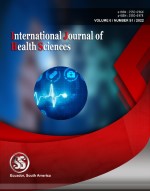Effectiveness of mnemonics based teaching in medical education
A prospective study in learning physiology by first year medical (MBBS) students
Keywords:
effectiveness, mnemonics, medical educationAbstract
Background: Classical teaching methods by faculty lectures and text-based materials are thought to be less interactive and research aimed to compare the effectiveness based on mnemonics is the need of the hour.Methods: All study enrolled students underwent a pre-test on six physiology topics. The pretest retention capacity of knowledge of all the students was assessed by multiple choice questions (MCQs). Later students were randomly assigned to the intervention-based mnemonic text-reading group which served as Group A or non-intervention group (control) which served as Group 2. Group A was subdivided in to group A1, group A2, group A3, group A4 and group A5 consisting 10 students in each with mnemonics-based teaching on six topics randomly assigned among them and educated. Similarly, group B was also subdivided into group B1, group B2, group B3, group B4 and group B5 consisting 10 students in each and were taught same six topics without the aid of mnemonics. The mean score difference and percentage between intervention and non-intervention group was compared and compared between pretest and posttest.Results: The data were analyzed by ANOVA followed by Dunnett’s multiple comparison test. Unpaired T rest with Two paired ‘p’ value.
Downloads
References
Parker R. The architectonics of memory: on built form and built thought. Leonardo. 1997; 30 (2): 147-152.
C. Jayne Brahler, Diane Walker. Learning scientific and medical terminology with a mnemonic strategy using an illogical association technique. Adv Physiol Educ.2008; 32: 219 –224.
Mastropieri M, Sweda J. Putting mnemonic strategies to work in an inclusive classroom. Learn Disabilities Res Pract.2000; 15(2):69-74
Stephens, Jo Ann Hull; Dwyer, Francis M. Effect of Varied Mnemonics Strategies in Facilitating Student Achievement of Different Educational Objectives. International Journal of Instructional Media, v24 n1 p75-88 1997.
Jennifer R. WolgemuthR. Brian Cobb, Morgen AlwellMorgen Alwell. The Effects of Mnemonic Interventions on Academic Outcomes for Youth with Disabilities: A Systematic Review. Learning Disabilities Research and Practice 23(1):1 – 10.
Belleza ES. Mnemonic devices: classification, characteristics and criteria.Rev Educ Res. 1981; 51: 247–275.
Samarakoon, L., Fernando, T., Rodrigo, C. et al. Learning styles and approaches to learning among medical undergraduates and postgraduates. BMC Med Educ.2013;13:42.
Bloom-Feshbach K, Casey D, Schulson L, Gliatto P, Giftos J, Karani R. Health literacy in transitions of care: An innovative objective structured clinical examination for fourth-year medical students in an internship preparation course. Journal of General Internal Medicine. 2015;31(2):242–6.
Freiwald T, Salimi M, Khaljani E, Harendza S. Pattern recognition as a concept for multiple-choice questions in a national licensing exam. BMC Medical Education. 2014;14(1):232.
Krathwohl Dr, Anderson LW. Merlin C. Wittrock and the revision of bloom’s Taxonomy. Educational Psychologist. 2010;45(1):64–5.
Matthew M. Cirigliano (2013) Musical mnemonics in health science: A first look, Medical Teacher. 2013; 35(3): e1020-e1026.
John Dunlosky, Katherine A. Rawson, Elizabeth J. Marsh2, Mitchell J. Nathan, and Daniel T. Willingham. Improving Students’ Learning with Effective Learning Techniques: Promising Directions from Cognitive and Educational Psychology. Psychological Science in the Public Interest. Psychol Sci Public Interest. 2013 Jan;14(1):4-58.
Ayisha Qureshi, Farwa Rizvi,2 Anjum Syed, Aqueel Shahid, Hana Manzoor. The method of loci as a mnemonic device to facilitate learning in endocrinology leads to improvement in student performance as measured by assessments. Adv Physiol Educ. 2014 Jun; 38(2): 140–144.
Published
How to Cite
Issue
Section
Copyright (c) 2022 International journal of health sciences

This work is licensed under a Creative Commons Attribution-NonCommercial-NoDerivatives 4.0 International License.
Articles published in the International Journal of Health Sciences (IJHS) are available under Creative Commons Attribution Non-Commercial No Derivatives Licence (CC BY-NC-ND 4.0). Authors retain copyright in their work and grant IJHS right of first publication under CC BY-NC-ND 4.0. Users have the right to read, download, copy, distribute, print, search, or link to the full texts of articles in this journal, and to use them for any other lawful purpose.
Articles published in IJHS can be copied, communicated and shared in their published form for non-commercial purposes provided full attribution is given to the author and the journal. Authors are able to enter into separate, additional contractual arrangements for the non-exclusive distribution of the journal's published version of the work (e.g., post it to an institutional repository or publish it in a book), with an acknowledgment of its initial publication in this journal.
This copyright notice applies to articles published in IJHS volumes 4 onwards. Please read about the copyright notices for previous volumes under Journal History.
















